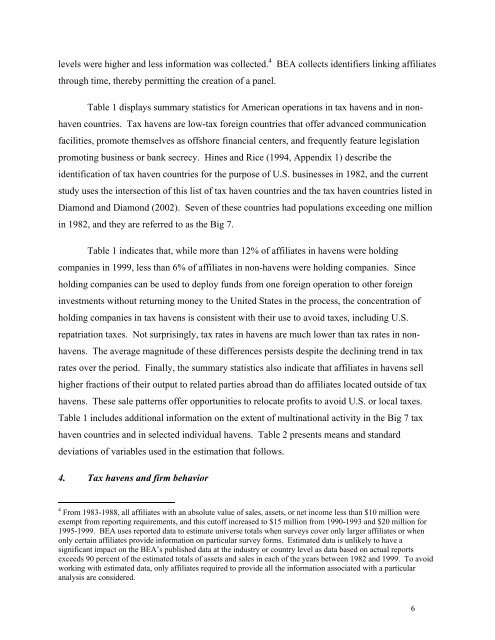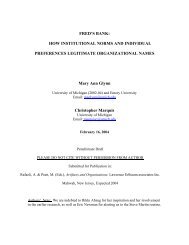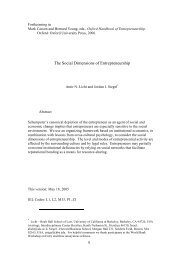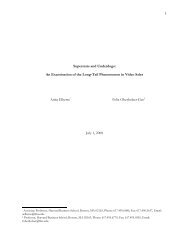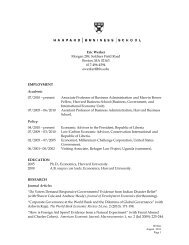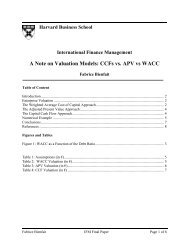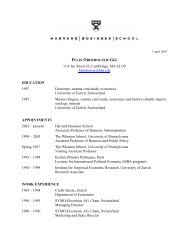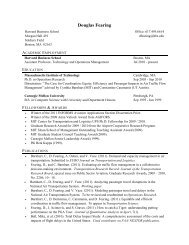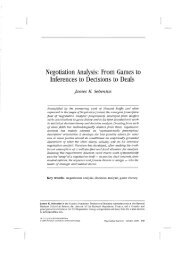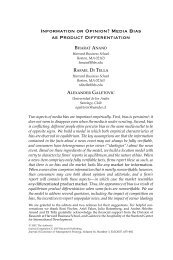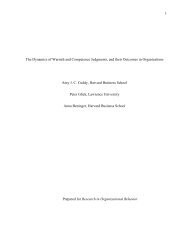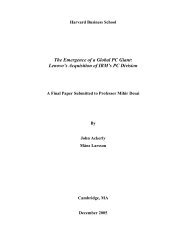The Demand for Tax Haven Operations - Harvard Business School
The Demand for Tax Haven Operations - Harvard Business School
The Demand for Tax Haven Operations - Harvard Business School
Create successful ePaper yourself
Turn your PDF publications into a flip-book with our unique Google optimized e-Paper software.
levels were higher and less in<strong>for</strong>mation was collected. 4 BEA collects identifiers linking affiliates<br />
through time, thereby permitting the creation of a panel.<br />
Table 1 displays summary statistics <strong>for</strong> American operations in tax havens and in nonhaven<br />
countries. <strong>Tax</strong> havens are low-tax <strong>for</strong>eign countries that offer advanced communication<br />
facilities, promote themselves as offshore financial centers, and frequently feature legislation<br />
promoting business or bank secrecy. Hines and Rice (1994, Appendix 1) describe the<br />
identification of tax haven countries <strong>for</strong> the purpose of U.S. businesses in 1982, and the current<br />
study uses the intersection of this list of tax haven countries and the tax haven countries listed in<br />
Diamond and Diamond (2002). Seven of these countries had populations exceeding one million<br />
in 1982, and they are referred to as the Big 7.<br />
Table 1 indicates that, while more than 12% of affiliates in havens were holding<br />
companies in 1999, less than 6% of affiliates in non-havens were holding companies. Since<br />
holding companies can be used to deploy funds from one <strong>for</strong>eign operation to other <strong>for</strong>eign<br />
investments without returning money to the United States in the process, the concentration of<br />
holding companies in tax havens is consistent with their use to avoid taxes, including U.S.<br />
repatriation taxes. Not surprisingly, tax rates in havens are much lower than tax rates in nonhavens.<br />
<strong>The</strong> average magnitude of these differences persists despite the declining trend in tax<br />
rates over the period. Finally, the summary statistics also indicate that affiliates in havens sell<br />
higher fractions of their output to related parties abroad than do affiliates located outside of tax<br />
havens. <strong>The</strong>se sale patterns offer opportunities to relocate profits to avoid U.S. or local taxes.<br />
Table 1 includes additional in<strong>for</strong>mation on the extent of multinational activity in the Big 7 tax<br />
haven countries and in selected individual havens. Table 2 presents means and standard<br />
deviations of variables used in the estimation that follows.<br />
4. <strong>Tax</strong> havens and firm behavior<br />
4 From 1983-1988, all affiliates with an absolute value of sales, assets, or net income less than $10 million were<br />
exempt from reporting requirements, and this cutoff increased to $15 million from 1990-1993 and $20 million <strong>for</strong><br />
1995-1999. BEA uses reported data to estimate universe totals when surveys cover only larger affiliates or when<br />
only certain affiliates provide in<strong>for</strong>mation on particular survey <strong>for</strong>ms. Estimated data is unlikely to have a<br />
significant impact on the BEA’s published data at the industry or country level as data based on actual reports<br />
exceeds 90 percent of the estimated totals of assets and sales in each of the years between 1982 and 1999. To avoid<br />
working with estimated data, only affiliates required to provide all the in<strong>for</strong>mation associated with a particular<br />
analysis are considered.<br />
6


